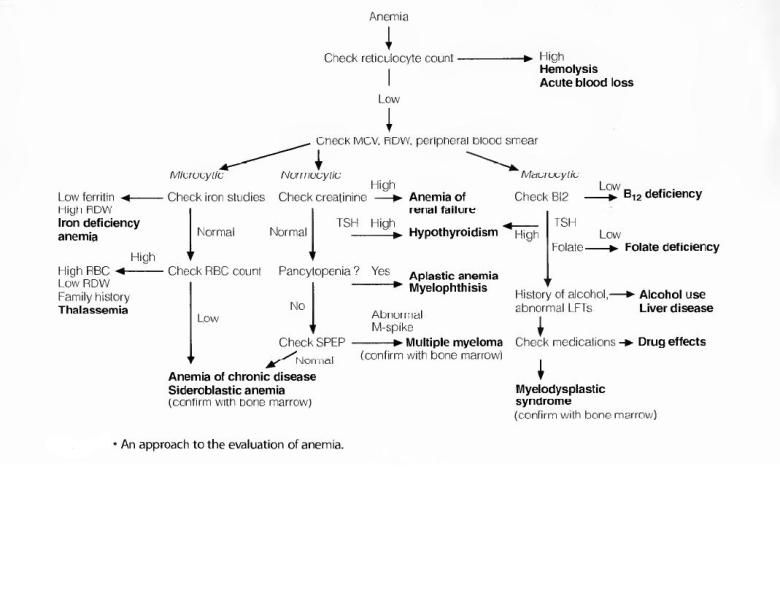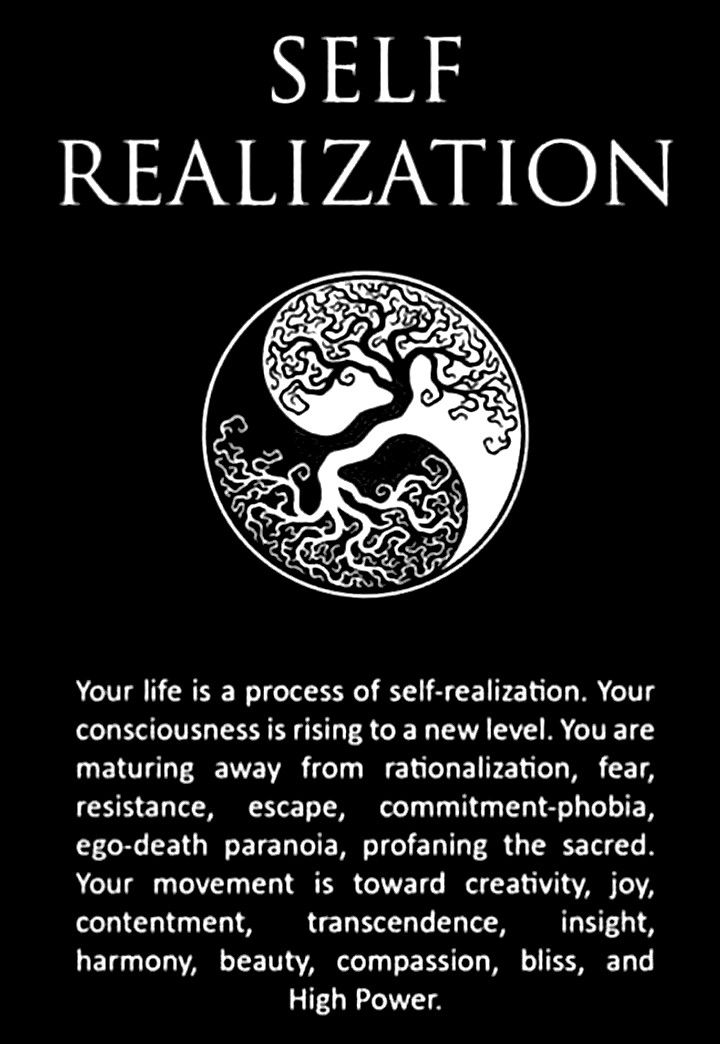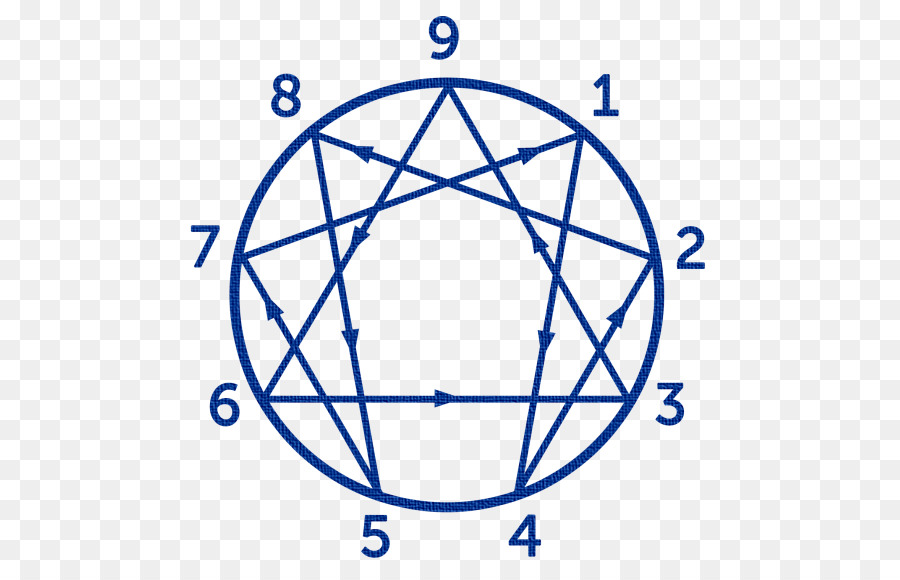Divorce rate for 2nd marriages
9 Reasons Why Second Marriages End in Divorce
Statistics show that in the United States, 50% percent of first-time marriages, 67% of second marriages, and 74% of third marriages end in divorce. Yikes, that sure sounds bleak.
But, why is this? You’d think one would get ‘better’ at the whole marriage thing with more practice. And whatever happened to third time’s a charm?
With each waltz down the aisle, surely the bride and groom both think- “this time I got it right, this is the real thing, this is unshakable, this the marriage that will beat all odds..”
But even if you picked right, sadly the deck is stacked against you from the get-go.
Turns out, there are many reasons why second and third marriages fail.
If you are contemplating remarriage, be aware of these stumbling blocks. And when/if you find yourself up against one, know that with patience, understanding, communication, hard work, and love, you can overcome!
1. Been There, Done That, and SurvivedIf someone has been through a divorce once before, and knows they can make it through this tragic, life-altering ordeal, then maybe they are less terrified of going through it again when the sh$t hits the fan.
The thought process might be “I’ve done it once, lived to the tell the tale, and can survive it….again.”
They may also be more inclined to run at the first sign of trouble.
So, it’s not that one gets better at marriage with every marriage, it’s that one gets better at divorce with every marriage.
2. Divorce BaggageHaving been through a wrenching emotional experience, one might be wary of fully opening their heart to a new love.
Someone may think they are over their divorce, but deep down, at the subconscious level, their wounds are still raw.
A fear of intimacy- getting too close- leaves them scared of giving their all. Vulnerability reminds them of the pain from the divorce.
Always expecting the worst, being a ‘Debbie Downer’, with doomsday around every corner is not healthy for the new relationship. A glass-half-full attitude can become a self-fulfilling prophecy.
Carrying the same emotional baggage, and pain, from one relationship to another is poisonous.
Sometimes divorcees get TOO set in their ways of independence, especially if they have been divorced for a long while.
If someone is not willing to fully merge their life with yours, the marriage will be difficult to sustain.
Make sure everyone going into the new marriage is emotionally healed, and healthy, and really ready for a fresh start.
3. Marrying for The Wrong ReasonsFeeling lonely, or feeling like one just can’t hack it on their own, can lead to hasty decisions. Reentering into coupledom, without clearly thinking things through in a mature manner, sets a marriage up for failure.
Rebounding is quite common, as the attention from another suitor can be very intoxicating, like an addictive drug. Running from one relationship to another, without giving it proper time and assessment is dangerous.
Once the infatuation wanes, the reality of the relationship may not be as rosy without those rose-colored glasses.
4.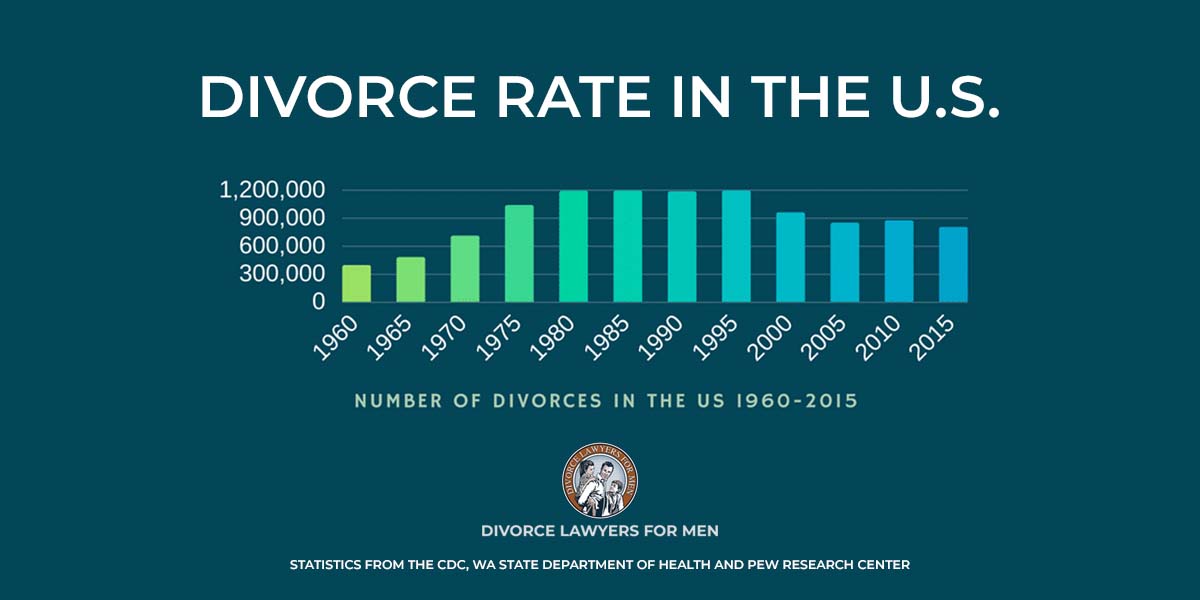 Not Enough Time Spent Getting to Know Someone
Not Enough Time Spent Getting to Know SomeoneIt’s important to get to know someone in ALL aspects of life before marrying them.
No one is always the best version of themselves, and it’s important to see someone when they aren’t – see how they handle stress, criticism, bad luck, tough times, rejection, and failure. How are problems dealt with as a couple?
No wonder most couples from the hit show The Bachelor/The Bachelorette break up. It’s pretty easy to love someone when it’s all roses, champagne, and rainbows.
Without taking the time to see the whole person – the good, the bad, and the ugly – one won’t get the chance to properly evaluate their new mate before making a major life decision, i.e. marriage. This applies equally to first marriages and every marriage after.
Taking the slow (dating) boat is the only way to make a truly informed decision.
5.In a new relationship? Check out 24 (Essential) Rules for Dating After Divorce.
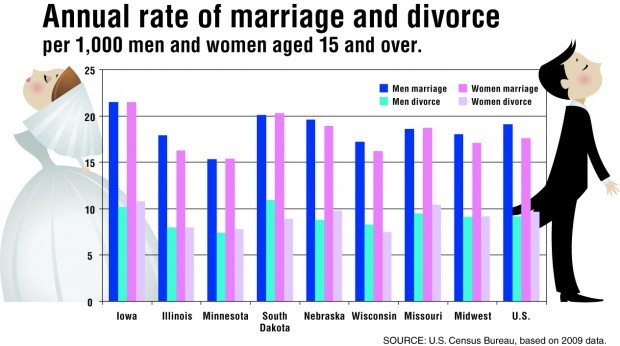 Kids as the Common Glue
Kids as the Common GluePerhaps the cement holding a 2nd/3rd/4th marriage together isn’t as strong. Marriage, historically and as an institution, was mainly intended as a structure for raising offspring.
Since most subsequent marriages do not produce children, there is no common glue binding them together.
Couples won’t be as inclined to ‘work it out, for the children’s sake’ when things get rough. Many often sacrifice their own happiness and stay in a (first) marriage way past its expiration date. Everyone knows at least one couple who waited until the kids left off to college to divorce.
As hard as kids are to raise, and as tough as they can be on their parents, they act as a stabilizing influence in marriage.
Furthermore, without children in common, the element of family is not as fundamental. So, the desire to keep the family together is not as strong.
Simply put, there is less at stake in allowing a marriage to dissolve when little children hearts aren’t a factor.
While children act as binding agents in first marriages (even rocky ones), stepchildren are often the dissolving agents in subsequent ones
Children from a prior marriage make subsequent marriages even more complicated. The more children the more complications.
Learning to live with other people’s children isn’t easy, I can barely live with my own on days when they are just being little hellions. I can’t imagine living with someone else’s snarky, PMS-y teen girl, let alone my own.
Plus, children often harbor resentment for their parent’s new spouse and will go out of their way to make things difficult.
Children heal from divorce at different rates, some faster and easier than others. Many fantasize about their parents getting back to together for years.
They mourn the loss of their family and often aren’t welcoming to new step-parents or step-siblings. They view them as obstacles to mommy and daddy getting back together.
Furthermore, stepparents do not have the power to be a disciplinarian and find themselves in the difficult position of having to bite their tongues. They often feel walked upon by their partner’s children, disrespected in their own home, with not much they can do about it.
It takes patience, time, and intense communication to make the new, blended family run at some semblance of smoothly.
7. The Ex-FactorRelated: Stepping into Step-Parenting (Struggles, Boundaries, Advice)
Then there are exes to cooperate with.
So basically, as more and more characters join the blended family, the crazier the circus gets. Juggling these relationships can cause problems and generate animosities, further complicating the new family dynamic.
And while some exes are thrilled to see their ex enter a new marriage—especially if it ends their alimony payments – some are sad, seething, and still feel betrayed.
Some angry exes continue to drag their ex-spouse back to court for various (often petty) reasons long after the divorce is final, just because they can.
Some exes may thrive on attempting to sabotage your new relationship every chance they get. These off-the-wall, ill-intended actions do cause serious emotional and financial strife in the new marriage.
Even worse, they may use children as a ploy in combat against you and your new partner …yes – it’s very sad, and yes – very stressful.
8. Money MattersIf my ex sounds at all like yours, you should definitely give this a read: How to be in the Same Room with an Ex You Loathe
Money is often an issue in first marriages but becomes even more pronounced in second/third marriages due to child support and spousal maintenance payments.
Money and resentment go hand in hand in second/subsequent marriages, and can especially feel the strain when money is tight. And issues only compound when bringing in debts.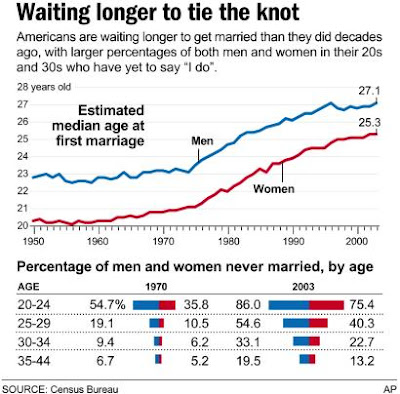
As individuals, we all have our own philosophies on money: saving vs. spending.
Money matters tend to bring out a lot of ‘feeling’ in people.
Maybe one spouse feels like they are fronting the bill for most of their lifestyle because much of their new spouse’s money is going toward child rearing expenses for children that aren’t theirs, and aren’t particularly pleasant, and surely aren’t appreciative.
A new wife might feel bitter that her new husband is paying what she considers an exorbitant amount in spousal support to his ex-wife. A newly wed bride may feel resentful that now, because of her new marriage, she must forfeit her alimony. One ex may feel like they pay too much in support, while the other ex feels that they are paid too little.
Even if money isn’t especially tight, money still has an influence. If wife of marriage present wants to take an African Glamping Safari but can’t because hubby must keep sending those hefty checks to wife of marriage past, she’ll probably get a bit pouty when she must settle for state-side camping instead.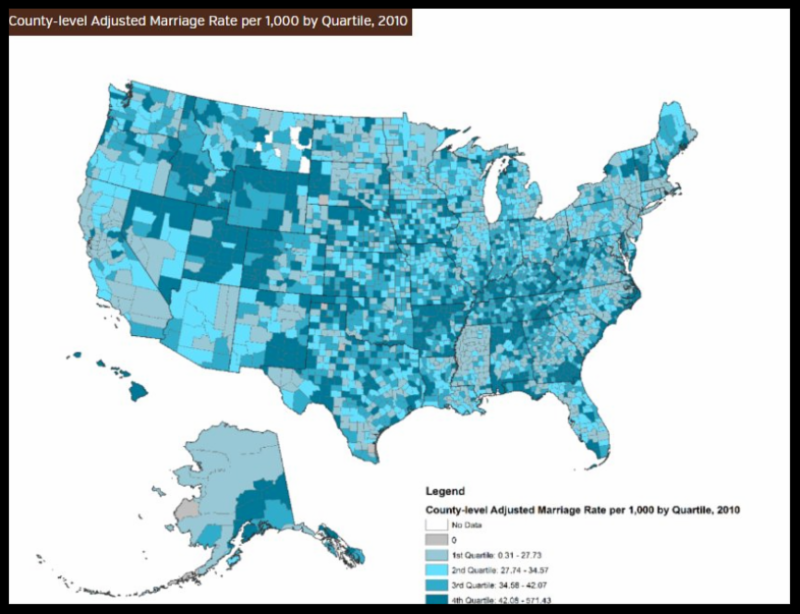
And even if money is bountiful, there can still be issues. For example: Contemplating early retirement? No can do hubby number two- wife number one won’t allow for it, she demands those payments- sorry new wife.
People are just weird about money, and divorce seems to make people even weirder about it.
9. Complicated Family Matters & In-Law SituationsIn-laws, and extended family in general, are difficult enough. In-Law relations, family past and present, become especially challenging in subsequent marriages, particularly when both spouses bring children into the new marriage.
The cast of characters would include husband’s parents, wife’s parents, husband’s ex’s parents, and wife’s ex’s parents… then throw in a few shady cousins, weird uncles, and obnoxious aunts. Whose house do you go to for Christmas?
Then, two of these in-law couples could be divorced as well, adding yet another pair of in-laws. Like cells they just keep breaking off, replicating, and expanding.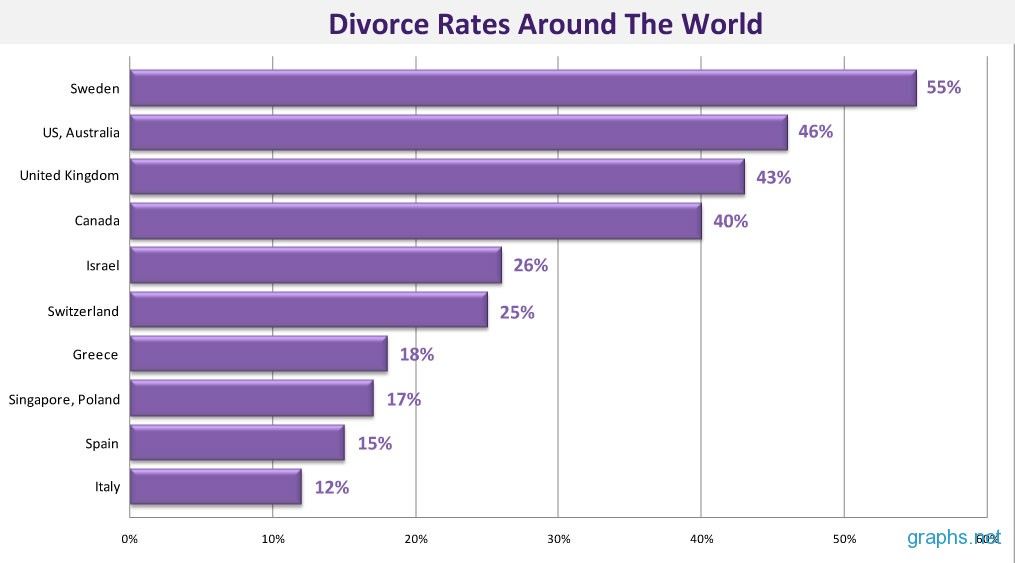 If one of the spouses in a third marriage has children from their previous two marriages, the mathematic variation of potential extended-family complications just expands.
If one of the spouses in a third marriage has children from their previous two marriages, the mathematic variation of potential extended-family complications just expands.
If you are contemplating re-marriage, it’s best to go in bright-eyed and but also with your eyes opened wide. Be wary of these many pitfalls and deal with any issues head on.
Be aware, be communicative, and be patient. You CAN be a success story! Break the wheel! Skew the statistics!
Why Second Marriages Often Tougher Than First Marriages
Half of all marriages end in divorce. That is a pretty well-known statistic. But what you may not know is that the risk of divorce increases with each subsequent marriage. Second marriages have a 60% divorce rate, while 73% of third marriages end in divorce.
Why is this? After one divorce, wouldn’t a person learn from their mistakes so they do not have to divorce again? You would think so, but that is not always the case.
One of the biggest reasons for a second divorce is that people rush into new relationships. After a divorce, people should take time to discover themselves. They should think about the mistakes they made in their marriage and figure out how not to make them again. They should also think about what they are looking for in a partner. After being married, they should have a better idea of the qualities they like in a person and which ones are deal-breakers.
After a divorce, people should take time to discover themselves. They should think about the mistakes they made in their marriage and figure out how not to make them again. They should also think about what they are looking for in a partner. After being married, they should have a better idea of the qualities they like in a person and which ones are deal-breakers.
But that does not always happen. Many people get scared after a divorce. They are on their own for what could be the first time in decades. This is very scary to some people. Therefore, they quickly find rebound relationships. They get serious quickly and settle down . They get married again and bring all their issues with them. This then leads to a second divorce.
First divorces are scary. People do not know what to expect. There are a lot of emotions involved. By the time a person is married again, they do know what to expect. They have been down that road before. The process is not as scary. Therefore, they are not as willing to work on their marriage.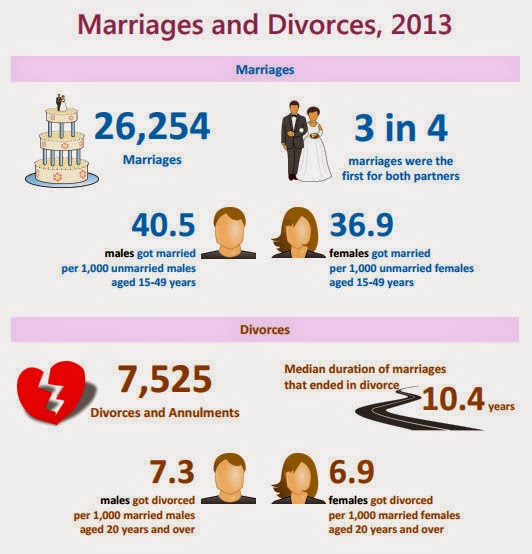 They survived their first divorce, so they are confident they can survive another if things do not go their way.
They survived their first divorce, so they are confident they can survive another if things do not go their way.
Also, many couples delay their first divorce because of children. Many couples stay together for longer than they want to because of the kids. Kids are usually not a consideration in subsequent marriages, since they are typically grown or at least close to it by then. Because of this, couples are more willing to divorce.
So, if you plan to tie the knot again after divorce, know that the odds are stacked against you. It is possible to live happily ever after, but it will take some work to defeat the odds. Here are some other reasons why marriage is often harder the second time around.
There is More Baggage InvolvedThe first time you got married, you may have just gotten out of college—or even high school— and had very few relationships. There were no kids involved and no emotional drama to deal with.
Things change when you get married.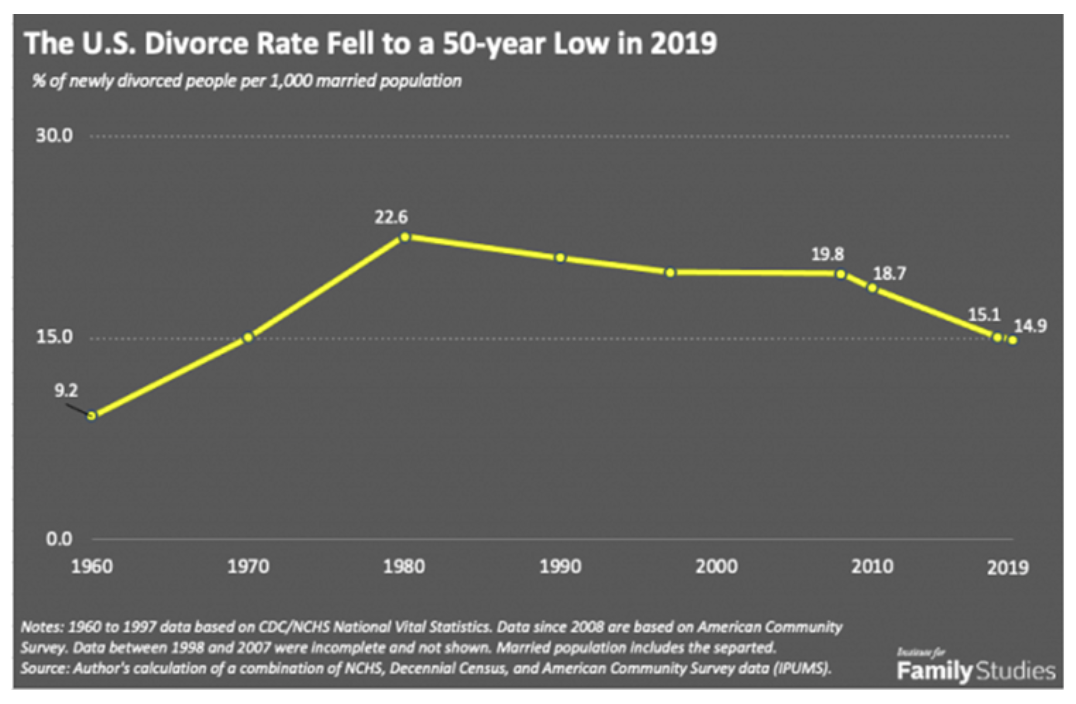 Kids come along. You may be dealing with your spouse’s infidelity. Perhaps there is addiction or abuse involved. Now that you are divorced, you are likely dealing with loneliness.
Kids come along. You may be dealing with your spouse’s infidelity. Perhaps there is addiction or abuse involved. Now that you are divorced, you are likely dealing with loneliness.
By the time you are ready for marriage #2, there is much more at stake. You and your partner both have emotional issues, kids, drama from the first spouse, the whole nine yards. You may think you can deal with all this, but it is very stressful.
There are Stepchildren InvolvedThis goes along with the concept of baggage, but it deserves its own category because while children can keep first marriages together, they often break up second marriages. Children react to divorce in different ways. Rarely do they like the fact that their parents are getting married again. They often resent the new spouse and will do what they can to break up the marriage. They have dreams of their parents getting back together and will try to get rid of the obstacle—the stepparent. Stepparents have no authority over stepchildren, so it will take a lot of work and patience to deal with this situation.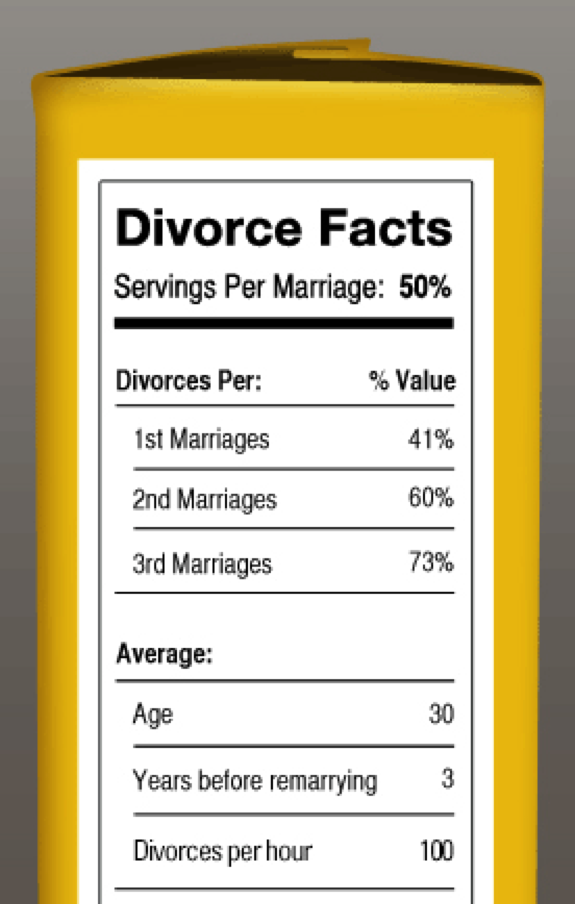
When people get divorced, they feel lonely and scared. They rush into relationships and marry the first person who makes them feel secure. They like the attention they get from their new spouse. But relationships run their course. The infatuation goes away and real life takes over. The person realizes they made a hasty decision and decides this is not the person they want to be with. Another divorce ensues.
Money IssuesMoney matters are more pronounced in second marriages, as one spouse is usually paying child support or alimony to an ex-spouse. The other spouse may feel resentment as he or she is paying for most of the household expenses. Money may be spent on stepchildren who are unappreciative. Even if there is sufficient money, there will always be disagreement about how it is spent.
Family ComplicationsThings are complicated enough when you consider your own extended family, such as aunts, uncles and cousins.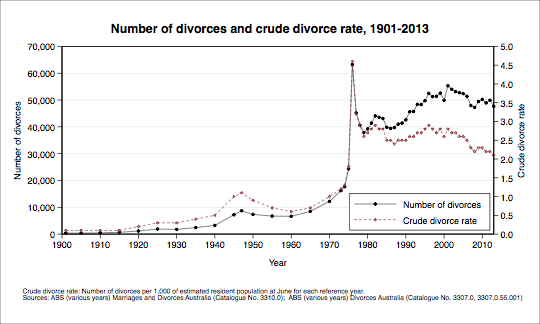 Holidays and celebrations get even more complex when you consider in-laws and the family of the ex-wife or ex-husband. Then you and your spouse are bringing children into the mix. This can bring about resentment and family strife when you cannot please everyone. It is best to plan for this ahead of time and try to come to an agreement with your spouse.
Holidays and celebrations get even more complex when you consider in-laws and the family of the ex-wife or ex-husband. Then you and your spouse are bringing children into the mix. This can bring about resentment and family strife when you cannot please everyone. It is best to plan for this ahead of time and try to come to an agreement with your spouse.
A successful marriage takes a lot of work. That is why second and subsequent marriages fail at higher rates. When people are older, there is more baggage involved and it is harder to overcome certain issues.
Whether this is your first or third divorce, Broward County divorce attorney Scott J. Stadler can help you through the process and get you a favorable outcome. Schedule a consultation by filling out the online form or calling (954) 346-6464.
Childless couples divorce more often - News - IQ Research and Education Portal - National Research University Higher School of Economics
The risks of divorce for modern spouses are much greater than for couples of the late Soviet era.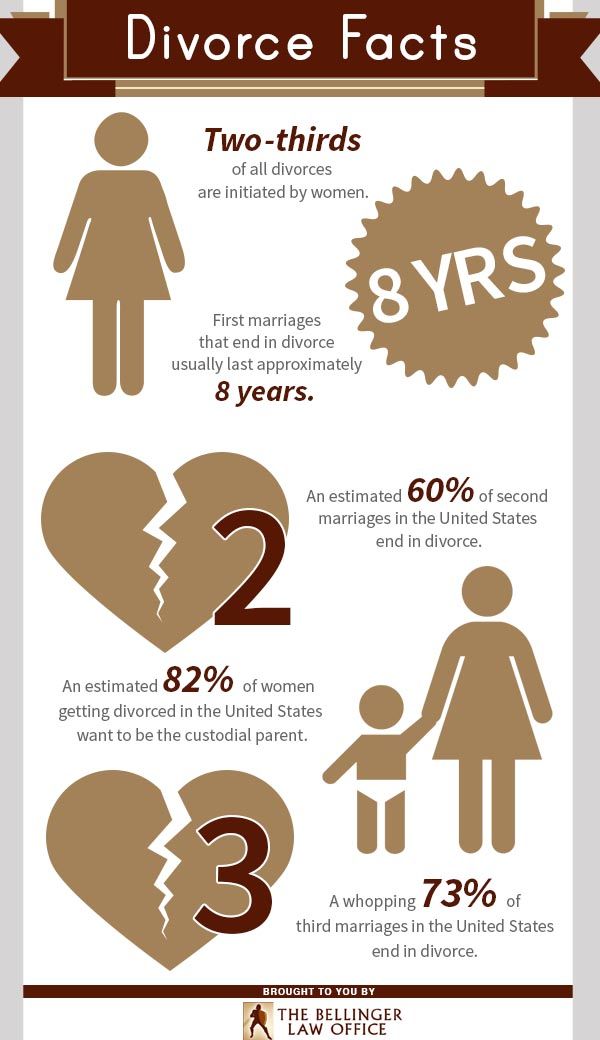 The probability of the collapse of childless unions is especially high. At the same time, the trend of the last decade has been the stabilization of the number of divorces - about 60% of marriages end in the termination of obligations, the deputy director of the HSE Institute of Demography found out Sergey Zakharov , who studied the features of marriages and divorces in modern Russia.
The probability of the collapse of childless unions is especially high. At the same time, the trend of the last decade has been the stabilization of the number of divorces - about 60% of marriages end in the termination of obligations, the deputy director of the HSE Institute of Demography found out Sergey Zakharov , who studied the features of marriages and divorces in modern Russia.
In the 1970s and 1980s, the risk of divorce for married couples in the country was 30-40%. Now, according to statistics, the probability of marriage destruction exists in 58% of couples. In other words, compared with the late Soviet period, the stability of the family union in Russia has noticeably decreased.
At the same time, the number of divorces has not changed radically over the past decade. Only some fluctuations of its indicators were observed, noted Sergey Zakharov in the article "Marriages and Divorces in Modern Russia", published in the National Research University Higher School of Economics journal "Demoscope Weekly".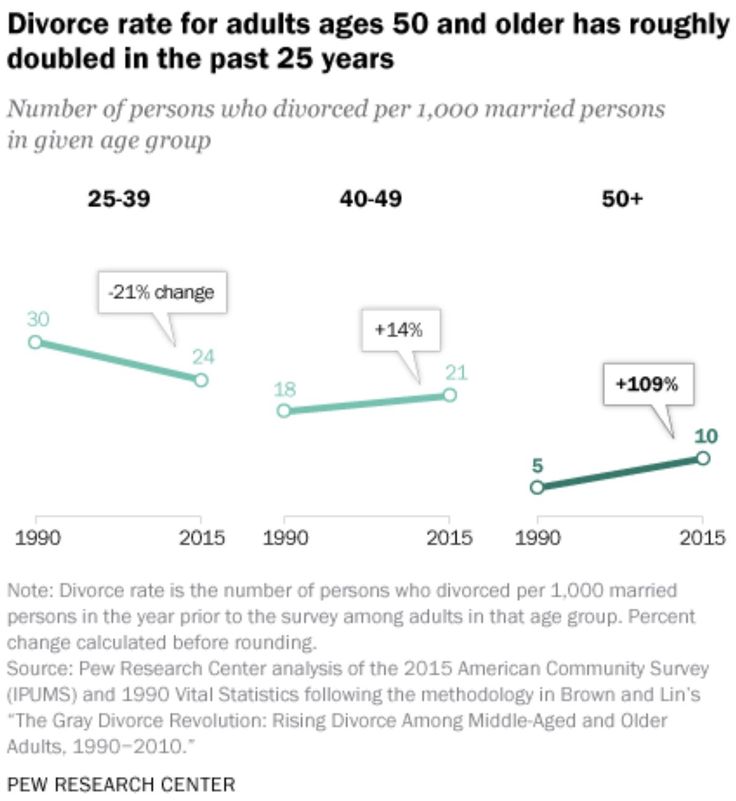
Marriage policy and statistics affect the number of divorces
The increase in divorce has become one of the matrimonial signs of the twentieth century. In part, this process in the Russian Federation was restrained by law. The liberalization of family policy (in the 1920s, in the mid-1960s) was often accompanied by a surge in divorces. This testified to the high potential for the growth of divorces, which, when the official “barrier” was weakened, broke out, the expert comments.
However, not only objective reasons affect the number of divorces, but also the nuances of statistical calculations. So, in the 1990s, there were both surges and declines in divorces (which was partly influenced by the socio-economic situation), but at the very end of the twentieth century, the jump in the number of cases of divorce was most likely explained by statistical "arithmetic" - partial double counting the same event. Former spouses could receive divorce certificates in different registry offices, and not only in the one in which the marriage was registered, as the previous practice provided, Zakharov explained.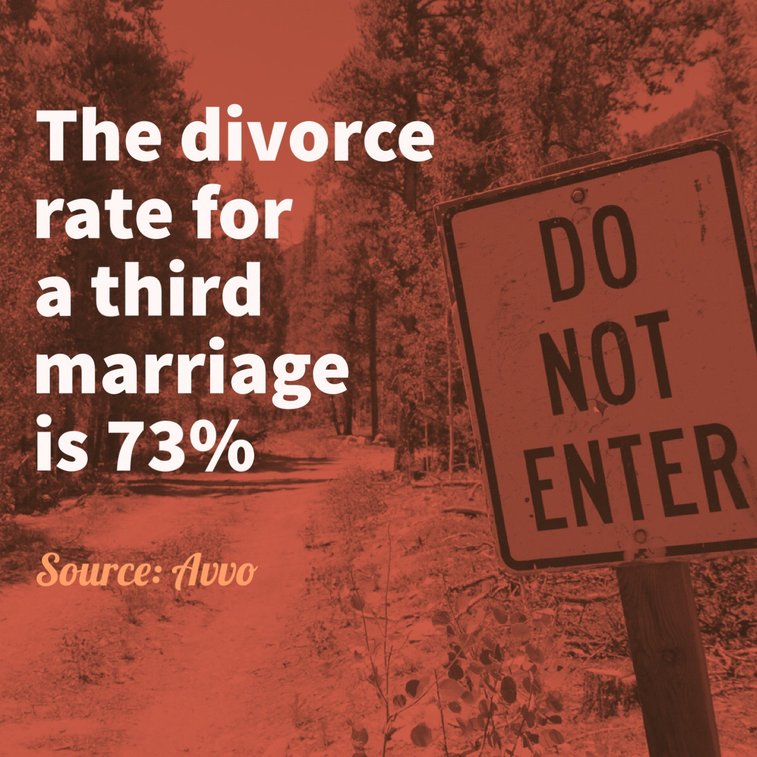
Divorce rates are leveling off
In 2003-2012, the dynamics of the number of divorces resembled a pendulum: there were more or less divorces every year.
In 2005, 605,000 divorces were registered, or 4.2 per 1,000 of the population, which means a decrease in the indicator to the level of the early 1980s.
In 2006-2008, the number of divorces for three years jumped by 16.2%, reaching 703.4 thousand, or 5 per 1000 population. In the next two years, the number of divorces again decreased.
In 2011, the figures jumped again, amounting to 669.4 thousand, or 4.7 per 1,000 of the population, and in 2012 they fell to 644.1 thousand, that is, to 4.5 per 1,000.
In 2013, divorces again gave a surge - up to 668 thousand (4.7 per 1000), and this became the deja vu of 2011.
At the same time, the increase in the overall divorce rate in 2013, compared to 2012, equally affected both urban and rural areas. The indicator increased in urban settlements from 4.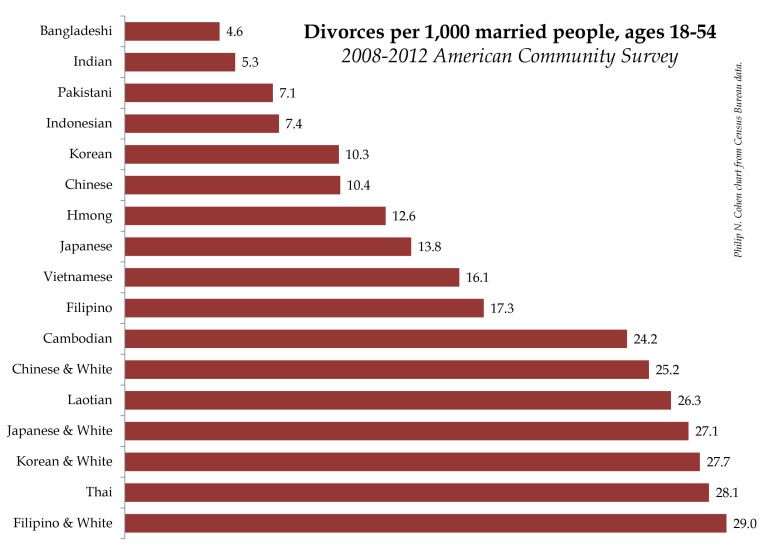 7 to 4.9 per 1,000 people, in rural areas - from 3.8 to 4 per 1,000. Judging by the preliminary data of Rosstat, Zakharov notes, the increase in the number of divorces in 2014 continued. However, it cannot be called radical.
7 to 4.9 per 1,000 people, in rural areas - from 3.8 to 4 per 1,000. Judging by the preliminary data of Rosstat, Zakharov notes, the increase in the number of divorces in 2014 continued. However, it cannot be called radical.
After major upheavals caused by changes in divorce statistics in the late 1990s and early 2000s, "divorce rates have stabilized against a backdrop of year-to-year fluctuations that are difficult to explain," the researcher believes. Moreover, these fluctuations are difficult to explain by fundamental reasons - socio-psychological (massive transformations in the relationship of spouses), demography (nuances in the age composition and changes in the number of registered marriages) or the economy (changes in the standard of living of families), the expert adds.
White spots in the background of divorces
Official statistics do not have all the data on divorced spouses. So, in the "zero" statistical authorities did not develop data on the age of ex-husbands and wives, on the breakdown of marriage in the context of its duration and sequence (first or second union). In 2011, Rosstat was able to bring these statistical plots back into practice. However, considerable gaps with the initial data still remain.
In 2011, Rosstat was able to bring these statistical plots back into practice. However, considerable gaps with the initial data still remain.
Thus, one of the problems is the high number of divorces among "persons of unknown age". It is connected with the fact that some regions simply do not provide information on the age of the diverging spouses. In addition, the statistical incident of the late 19th century is probably still alive.90s, when it was not so much the cases of divorce themselves that were counted, but the number of divorce certificates issued.
Adolescents “fell ill” with divorces
The age pattern of divorce gives another difficult to explain story - a surge in divorces among very young spouses. In recent years, demographers have recorded an "epidemic" of divorces among minors - Russians aged 16-17. Thus, in 2012, the number of marriage breakdowns among teenagers unexpectedly jumped sharply: for boys - from 0.01 to 0.47 per 1,000 people, for women - from 0.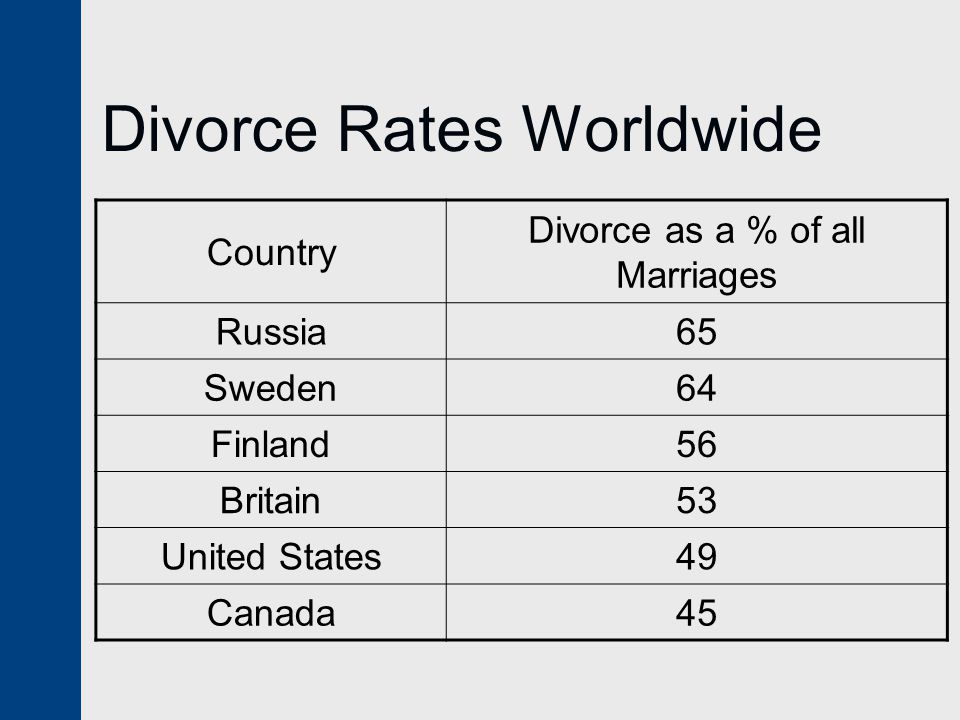 14 to 0.8. Divorce rates have also increased among older youth. In 2013, the figures for minors decreased slightly, while for people aged 18-24 they slightly increased.
14 to 0.8. Divorce rates have also increased among older youth. In 2013, the figures for minors decreased slightly, while for people aged 18-24 they slightly increased.
It is still difficult to explain the jump in divorces among teenagers. “Were their ultra-early marriages stimulated by unplanned births of children under the influence of the ongoing policy of increasing the birth rate and the fight against abortion?” the author of the study asks a rhetorical question.
However, the number of divorces among minors is negligible, which means that it has little effect on the overall matrimonial picture.
Those who get divorced age after those who get married
The general characteristics of divorce indicate the spread of divorces over the past forty years - against the background of maintaining the average duration of disintegrating marriages.
The total divorce rate (the average number of divorces for an individual during a lifetime, regardless of whether he ever gets married) increased for men from 0.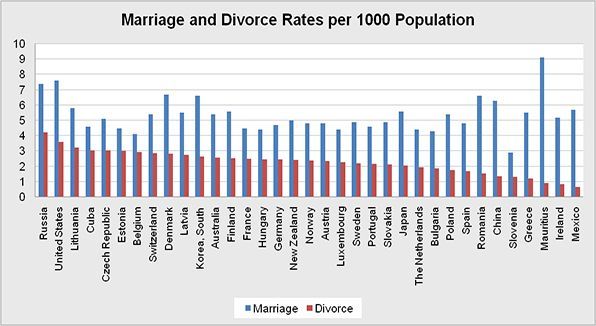 489 in 1970 to 0.650 in 2013, for women - from 0.422 to 0.614 in those same years. At the same time, the average duration of the union, which is subsequently terminated, remains at the level of ten years during the entire observed period (since 1970).
489 in 1970 to 0.650 in 2013, for women - from 0.422 to 0.614 in those same years. At the same time, the average duration of the union, which is subsequently terminated, remains at the level of ten years during the entire observed period (since 1970).
It is obvious that a certain proportion of people have the experience of living in several marriages. According to the national survey “Parents and children, men and women in the family and society”, “by the age of 50, there are 1.04 registered marriages per man, 1.07 per woman; for those who have ever been married, respectively, - 1.1 and 1.2, ”explains Sergey Zakharov.
At the same time, the risk of termination of a second union, according to various studies, is not lower than the first one. Given this recurrence, the expected proportion of men and women with a lifetime of divorce is about 60%, the researcher noted.
Another trend in divorce is that the age of the separated spouses is increasing. This is due to the aging of marriage - a shift in the registration of relationships to later ages. The expected age of divorce in 2011-2013 for men was above 39years, for women - over 35 years, which in both cases is more than a year higher than in the 1970-1990s.
The expected age of divorce in 2011-2013 for men was above 39years, for women - over 35 years, which in both cases is more than a year higher than in the 1970-1990s.
Marriages with children are dissolved less often
The share of broken unions in which there are joint children under 18 is decreasing, Zakharov stressed. If in the 1980s and 1990s more than 60% of divorces affected the interests of common children, then in 2012-2013 this figure was already around 40%.
This indicates not only a reduced birth rate, but also an increased risk of termination of childless unions, the expert explains. Marriages without children, according to him, have significantly increased their contribution to the total number of divorces - from 35-40% to 60%, the expert concludes
See also:
“Young people yearn for self-realization”
Illegitimate children do not mean fatherlessness
Russians value the traditional family
Cohabitation precedes marriage, not replaces it
Children from single parent families undermine trust in others
Divorce 05 earlier
Text author: Sobolevskaya Olga Vadimovna, March 20, 2015
All materials of the author
Demographics demography family
Reasons for divorce in Russia: statistics for 2020
Sergey Antonov
everyone is happy in marriage
Author profile
Alexey Smagin
never tried marriage
According to statistics, there are 7 divorces in Russia.
In 2020, 770.8 thousand marriages and 564 thousand divorces were registered in Russia. If you look at opinion polls, then often, when talking about the reasons for the breakup, the ex-husband and wife use the vague wording "didn't get along." We studied official divorce statistics and research by scientists and tried to find out why marriages in Russia actually break up.
How often people get divorced
Over the past ten years, Russians have become less likely to get married, while the number of divorces has remained approximately the same. So, in 2006 in Russia there were more marriages than divorces, about 1.5 times, in 2011 - 2 times, and in 2020 - 1.4 times. Even the pandemic had almost no effect on the number of couples who decided to formalize the breakup: in a covid year, there were 7 divorces for 10 weddings.
For convenience, statistics consider the relative number of marriages (and divorces) in the same way as other indicators: divide the number of marriages in the region by the number of its inhabitants.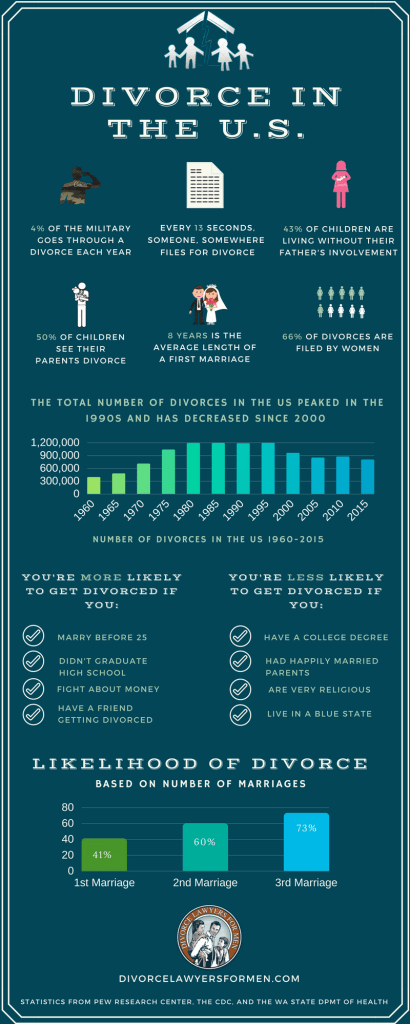 If you see that in Russia there are 75 marriages per 10,000 people, you should know that there are 150 newlyweds for every 10,000 inhabitants.
If you see that in Russia there are 75 marriages per 10,000 people, you should know that there are 150 newlyweds for every 10,000 inhabitants.
The number of marriages is affected by the birth rate in previous years. For example, in the eighties it was high, so the number of marriages grew until the end of the 2010s: a lot of people entered the so-called marriageable age - Russians most often get married at the age of 20-30. And in the nineties, the birth rate in the country fell by about one and a half times compared to the eighties. As a result, by 2020, the number of people at the age when Russians actively marry has also decreased.
Fragment of the HSE Annual Demographic Report for 2006PDF, 521 KB
In parallel, another factor played a role. In Russia, as in many Western countries, the typical bride and groom are gradually "aging": the average age of marriage is growing. In 1993, the typical groom was 26.1, the bride 24.1. In 2016 - 30.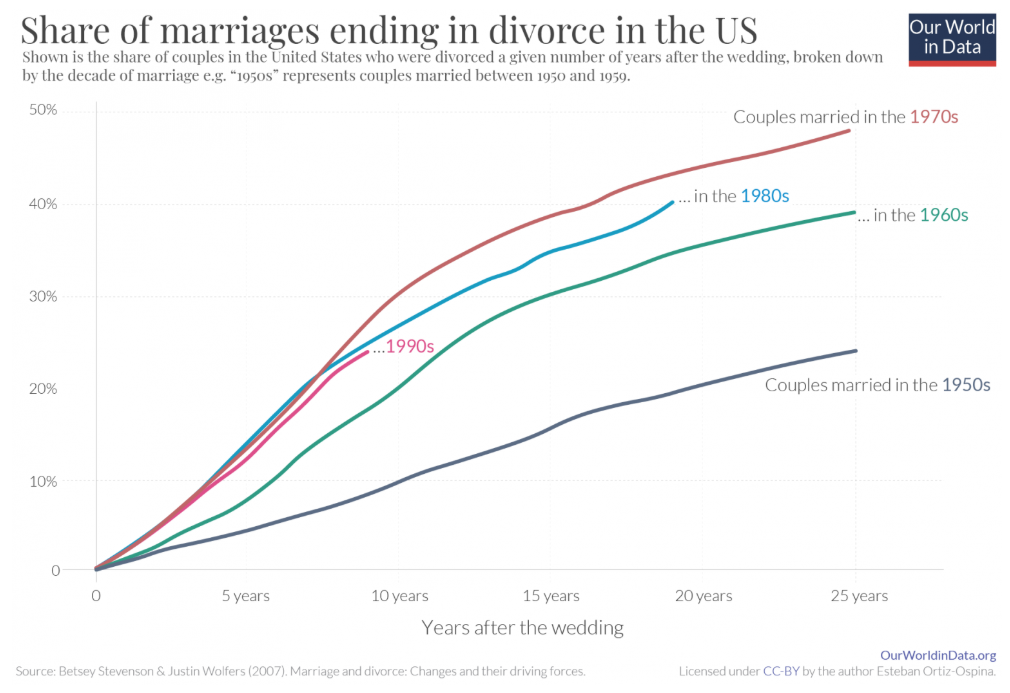 1 and 27.7, respectively.
1 and 27.7, respectively.
Fragment of the HSE Annual Demographic Report for 2017PDF, 668 KB
As a result, since 2012, the number of marriages has decreased by 1.8 times, and divorces by only 1.2 times.
The leaders in the number of divorces in 2020 are Sakhalin and the Magadan region: 51 divorces per 10,000 inhabitants. In third place is the Kaliningrad region: 50 per 10,000. Families break up least often in the national republics: for example, in Chechnya and Ingushetia, only 10 divorces per 10,000 inhabitants were registered.
What do Russians consider as a good reason for divorce
In 2019, VCIOM asked Russians what, in their opinion, is the most common reason for divorce in Russia. Respondents could select multiple answers. In the first place were financial factors — poverty and the inability to feed a family: 46% of respondents answered this way. In second place is the betrayal or jealousy of one of the spouses: 22%. On the third - lack of mutual understanding: 21%.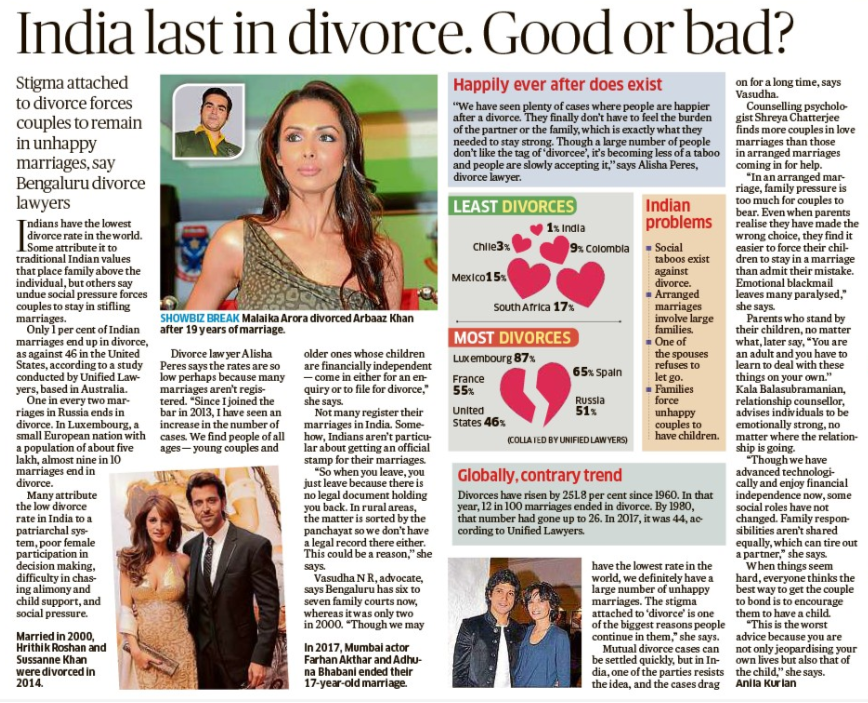
Interestingly, for several years in a row, those who considered a difficult financial situation as a reason for divorce were two times less.
Source: VTsIOM Source: VTsIOMAs for adultery in marriage, according to another study, more than half of Russians consider it worthy of condemnation. And only 12% of the respondents said that there is nothing reprehensible in this. Moreover, according to opinion polls, the proportion of those who categorically condemn sex on the side has grown almost one and a half times over 30 years - from 35 to 52%.
Infidelity, same-sex relationships, abortion: taboo or norm? — VTsIOM study
The number of people who say that there is nothing wrong with cheating also increased, but not significantly: from 9% in 1991 to 12% in 2018.
What else affects the strength of marriage
According to sociologists, there are and other factors that increase the likelihood of divorce. They are not as obvious as cheating or the unwillingness of one of the spouses to find a job.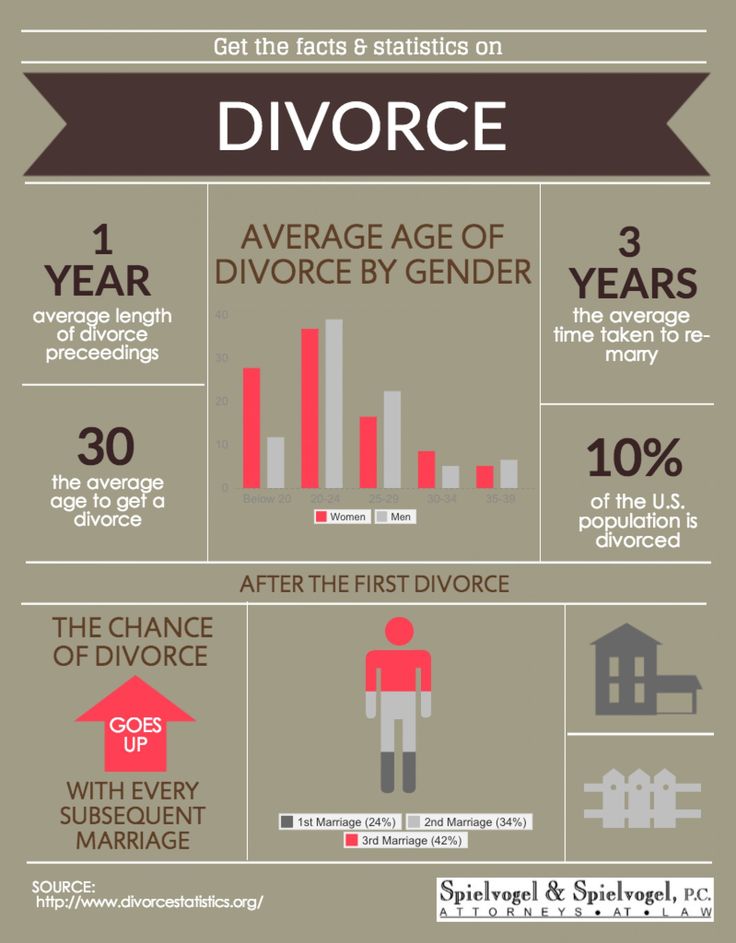 Sociologists analyze the divorce statistics of hundreds and even thousands of couples and come to the conclusion that there are hidden factors that increase the chance of a family breakup.
Sociologists analyze the divorce statistics of hundreds and even thousands of couples and come to the conclusion that there are hidden factors that increase the chance of a family breakup.
No children. According to the Institute of Demography of the Higher School of Economics, in the eighties and nineties, families with children accounted for more than 60% of the total number of divorces. By 2015, this figure fell one and a half times - to 41%.
Childless couples divorce more often — HSE study
Marriage age. With each year of marriage, the chance of divorce decreases. So, in couples who got married in 1980-1989, they thought about divorce 9.3% of men and 22.4% of women, and among those who registered relationships in 2000-2004 - 14.3 and 27.1%, respectively.
Who breaks up relationships more often and why — a study by the Higher School of Economics
Scientists explain this situation with purely psychological reasons: couples who started a family in the 2000s were at the beginning of a joint journey at the time of the study. They are just beginning to organize a joint life, distribute responsibilities, rub each other in. The likelihood of disagreement is much higher.
They are just beginning to organize a joint life, distribute responsibilities, rub each other in. The likelihood of disagreement is much higher.
The high position of a wife. Swedish scientists came to the conclusion that couples divorce more often, where a woman was promoted in the service. Families in which the wife gets the post of CEO, mayor or parliamentarian are twice as likely to break up than those where the same position goes to the husband.
Single women: career advancement and marital longevity - American Economic Journal article, in English
According to the authors of the study, couples in such cases have increased conflicts that are associated with the changed social and economic position of the wife. And women also have less time for family leisure and housework, which also often affects the strength of relationships.
Views on marriage. But there are also studies, the authors of which claim that the reasons for divorce lie only in the life attitudes of the spouses themselves.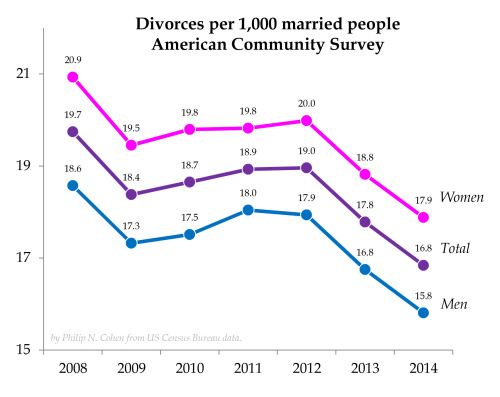 Scientists from Volgograd State University, who have been studying marriages and divorces in Russia for several years, say that neither the well-being, nor the duration of the relationship, nor the difference in the age of the husband and wife affect the strength of the family. People of different ages, with different levels of education, rich and poor, married for one year and many years, with children and without children - the probability of divorce is about the same for everyone.
Scientists from Volgograd State University, who have been studying marriages and divorces in Russia for several years, say that neither the well-being, nor the duration of the relationship, nor the difference in the age of the husband and wife affect the strength of the family. People of different ages, with different levels of education, rich and poor, married for one year and many years, with children and without children - the probability of divorce is about the same for everyone.
Causes of divorce in modern Russia — an article by scientists Elena Laktyukhina and Georgy Antonov in the journal Demoscope
According to researchers, subjective ideas about marriage and a partner are important, as well as respect, fidelity, tolerance, and the presence of common interests. If the other half corresponds to these ideas, the couple will not divorce. Simply put, if the husband believes that he is a breadwinner, and the wife's role is to stay at home, and she agrees with him, then their values are the same and the marriage will be strong.

